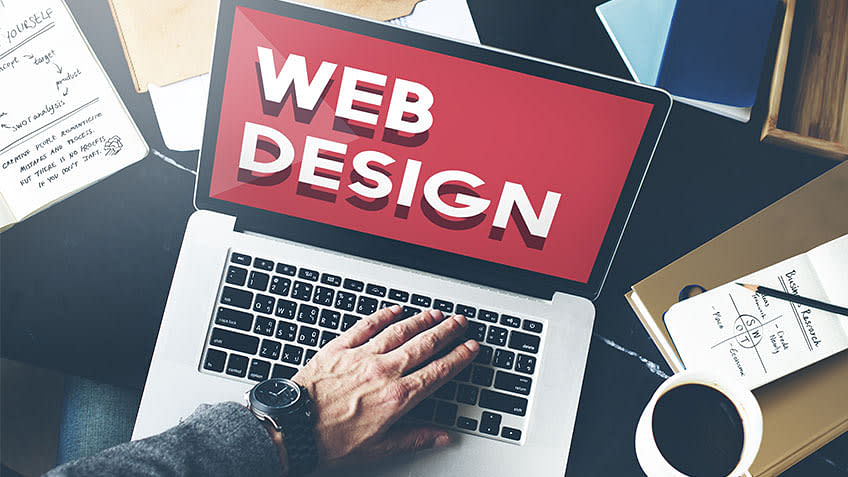Opening the Keys to Phenomenal Web Design for Your Service
Opening the Keys to Phenomenal Web Design for Your Service
Blog Article
The Comprehensive Overview to Crafting Visually Appealing and Practical Web Design That Fulfills Customer Requirements
In today's digital landscape, the significance of crafting website design that are both practical and aesthetically enticing can not be overstated. By focusing on user-centered style concepts, designers can produce experiences that not just draw in however also preserve customer passion. Secret visual components such as positioning, comparison, and equilibrium play an important role in this process, while the necessity of responsive design guarantees accessibility across numerous devices. Nevertheless, the trip does not finish with preliminary layout; recurring screening and iteration are crucial for refinement. What methods can one utilize to effectively balance these parts?
Comprehending User-Centered Style
At the heart of efficient internet design lies the concept of user-centered style, an ideology that focuses on the needs, choices, and habits of customers throughout the advancement procedure. This approach includes detailed research study to understand the target market, making certain that the end product reverberates with its desired individuals. By including individual feedback at every phase, designers can produce interfaces that are not just visually attractive yet instinctive and additionally functional.
User-centered style highlights empathy, requiring developers to step into the users' shoes and consider their perspectives. Techniques such as individual personas, journey mapping, and use screening are used to identify pain factors and opportunities for improvement. This iterative process permits consistent refinement, as developers adjust to developing user requirements and technical improvements.
Incorporating user-centered layout causes raised individual satisfaction and involvement, eventually causing greater conversion prices and brand name loyalty. It cultivates a collaborative atmosphere where stakeholders, consisting of users, designers, and developers, work together to attain a shared vision. By putting users at the leading edge of the design process, companies can develop sites that not just satisfy business objectives but likewise give significant and satisfying experiences for individuals.
Key Principles of Visual Design
Reliable visual design offers as the structure for developing user-friendly and engaging internet sites. It includes numerous vital concepts that lead designers in crafting cosmetically pleasing and useful interfaces.
First, balance plays a critical duty in attaining visual harmony. Designers ought to disperse aspects uniformly throughout the format to stay clear of frustrating individuals. This can be achieved with unbalanced or balanced style methods.
Following, contrast boosts readability and attracts focus to vital aspects. By utilizing varying shades, sizes, or shapes, developers can develop centerpieces that assist individuals through the web content.
Furthermore, placement is essential for organizing info. Regular placement of text and images promotes a clean design, enhancing general navigating and user experience.
Distance also adds to visual quality. Grouping related items with each other aids customers in recognizing the connection in between different elements, making the interface extra intuitive.
Finally, consistency in style components, such as font styles, designs, and shades, reinforces brand identification and aids customers browse the site much more effortlessly. By incorporating these crucial principles of aesthetic layout, internet designers can develop user interfaces that are not just aesthetically enticing yet likewise practical and user-centered.
Importance of Responsive Style
Receptive design is an essential facet of contemporary internet development, making sure that web sites operate effortlessly throughout a variety of tools and display dimensions. As the net landscape develops, the variety of devicesâEUR" varying from smart devices to tablets and desktop computersâEUR" demands a design technique that suits all individuals.
Applying responsive design permits an adaptable layout that immediately adjusts based on the individual's display measurements. This flexibility not just enhances accessibility however also boosts functionality, as individuals can communicate and browse with the website effortlessly, no matter their tool.

Furthermore, receptive style reduces the need for keeping numerous versions of a web site, enhancing updates and content administration. This effectiveness translates right into cost financial savings and an extra cohesive brand name experience throughout systems.
Enhancing Individual Experience
User experience (UX) is a crucial element of website design, affecting exactly how site visitors engage with a web site and perceive its worth. A well-crafted UX makes certain that individuals can navigate with ease, find details quickly, and attain their objectives successfully. The layout must think about the user's journey, from the minute they come down on the site to the completion of their desired activity, whether that be purchasing, signing up for a newsletter, or accessing info.
Secret aspects that boost UX consist of clear navigation, responsive designs, and appealing aesthetic material. Uniformity in layout components such as switches, shades, and typefaces fosters familiarity, making the site feel cohesive. Furthermore, maximizing load times is important; customers are less likely to remain on a site that is sluggish to respond.

Checking and Iterating Layouts
Evaluating and iterating layouts are essential processes that adhere to the first development of an internet site, guaranteeing that the user experience remains at the leading edge of any type of changes. These phases involve collecting user responses, examining style efficiency, and making notified alterations to boost usability and involvement.
Efficient testing can take different types, including usability screening, A/B screening, and individual surveys. Usability screening allows designers to observe genuine individuals as they interact with the web site, identifying pain points and areas for enhancement - web design. A/B screening, on the why not look here various other hand, contrasts 2 variations of a design aspect to establish which carries out much better, giving measurable information to overview choices. Individual surveys can supply qualitative insights, capturing customer views and choices.
Continuous version fosters a flexible style approach, where the web site develops in response to individual habits and comments. By committing to rigorous testing and model, designers can produce a web site that not just meets visual criteria however also provides a delightful and seamless customer experience.

Final Thought
In verdict, effective web this design requires the integration of user-centered concepts, vital visual design elements, and responsive frameworks to produce interesting user interfaces. By prioritizing user needs and carrying out continual screening and model, designers can fine-tune their productions to boost total complete satisfaction. The dedication to these methods not only cultivates a visually attractive aesthetic but also ensures capability throughout diverse tools, eventually adding to a favorable user experience and boosted involvement.
By prioritizing user-centered layout principles, designers can develop experiences that not only bring in but also keep user rate of interest.At the heart of efficient web layout lies the concept of user-centered layout, an approach that focuses on the demands, preferences, and actions of users throughout the development procedure. By positioning users at the leading edge of the design procedure, companies can produce sites that not just satisfy company goals however also give significant and rewarding experiences for individuals.
By focusing on individual requirements and choices, web designers can create experiences that are not just visually appealing however also practical, inevitably promoting individual satisfaction and commitment.
Customer surveys can offer qualitative insights, catching individual beliefs and choices.
Report this page